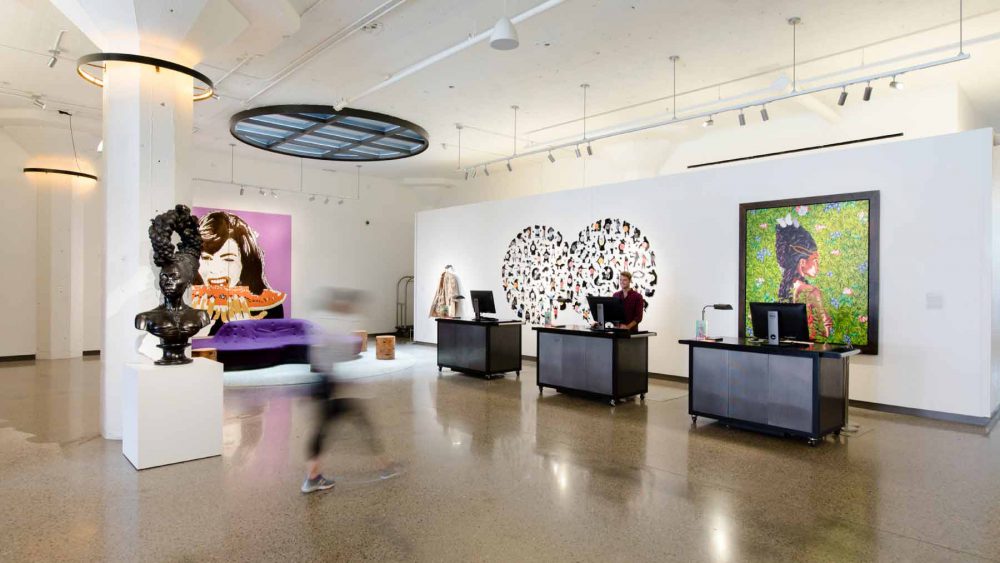Imitation vs. Adaptation in Hotel Design & Development
March 22, 2022
Jeremy Wells
The Problems of Relying Too Heavily on Outside Inspiration
There are so many unique hospitality brands and concepts around the world. Each one of these concepts is set in interesting, unique, and special destinations. If you are in a region that lacks these types of interesting concepts, it makes you wish you could transplant that business into your own backyard. For many smaller markets or regions, this often results in new developments which end in disaster.
Developing a property is more than just imitating another concept that has worked in a different market. We all love getting inspiration from hotel design websites, travel blogs, and Pinterest — but just because a hospitality experience resonates well in one market doesn’t mean it will resonate the same in another. This is why the best hotel and real estate developers understand the difference between imitation and adaptation.
Adaptation is necessary because each region, market, neighborhood, community, culture, and people are different. Yes, I may be inspired by a chic, modern hipster paradise in the heart of SoCal – but that same concept may not work in Paducah, KY. However, if you take inspiration from that SoCal experience, and adapt it to fit the community and culture of the desired destination, then your chances of success are much higher.
Each Community and Region Has Its Own Soul
The hotel industry has been inspired by the innovation and quality of boutique hotels for more than a decade. With their smaller scale, hotels that are classified as boutique properties can offer a more intimate experience for guests. They tend to be located in prime urban locations, contributing to the vitality of local neighborhoods, and they are often at the forefront of new interior design trends. They also cater to a specific market niche and enhance a guest’s overall experience.
While many hotel operators have embraced this concept, they do not always fully understand what it takes to create an authentic boutique experience. Too often, operators simply imitate existing concepts instead of creating unique designs that suit the needs of their guests and fit well within the context of their respective communities.
Hotels should not be designed as one-size-fits-all operations–each community and region has its own soul, and a new hotel should be designed to fit well within its own neighborhood, not impose on it. Instead, some operators have taken an approach that I like to call “cookie-cutter” development–build one model that can be replicated in multiple settings–but the end result is usually far from authentic and may even damage the local community’s character.
Traveler Profiles Can Be Wildly Different Between Two Different Destinations
Traveler interests and preferences can vary greatly between two destinations, which means that hotel developers and managers need to be mindful of their own guest profiles and tailor an experience to their needs. In doing so, it is important not to rely too heavily on outside inspiration, but rather look to adapt such inspiration to suit one’s own unique environment.
For example, it would seem reasonable for a developer building a hotel in Arizona to visit Sedona and perhaps take some design inspiration from the property there. However, if you take a look at the traditional Sedona guest versus the traditional Scottsdale or Phoenix guest you’ll notice some distinct differences. In general, guests visiting Sedona are seeking a very different experience than someone traveling to Phoenix or Scottsdale.
The Concept May Be Too Imposing on the Natural Surroundings
I recently read a story about a boutique hotel group that was set to launch its first hotel in Hong Kong. Though the group had been lauded for its contemporary designs and modern amenities, the new property on the Tsim Sha Tsui waterfront faced great opposition from local residents over the view being obstructed and the potential harm to wildlife. This was after the group had already scaled back its design plans to assuage some of these concerns by reducing building height and including a more prominent promenade.

Though this story is not uncommon in any industry, it brings up an important question: how do we balance innovation and tradition? This question is especially relevant in travel and hospitality, as the industry accounts for 8% of global carbon emissions. With sustainability now a top priority for travelers, hotels must walk a fine line between modernity and pragmatism. However, many companies are turning towards ecotourism to find a solution.
According to the International Ecotourism Society, Ecotourism is defined as “responsible travel to natural areas that conserves the environment, sustains the wellbeing of local people and involves interpretation and education”. Now more than ever, many travelers and brands believe it to be crucial that we preserve our natural resources in order to continue enjoying all that nature has to offer.
You May Underestimate Effort Required to Educate Travelers
More and more concepts are being “borrowed” from the rest of the world – but sometimes, a new idea can be ahead of its time, and certain hotel concepts may be too confusing to your market and guest types because it’s too new or unfamiliar to them. This means that you may have to invest heavily into educating travelers about your unique selling points.
For example, the Sextantio Le Grotte Della Civita in Italy was inspired by the caves of Matera, and it took a lot of time and effort to convince travelers to stay there. Unique concepts like this may be difficult to sell to your guests because they are not familiar with the idea.
When taking inspiration from outside sources, you need to be careful about choosing a concept that is too far removed from what your guests expect.
Is Your Gap Too Wide?
While it may sound awesome to open a hotel with a trendy food hall, NFT art gallery, pickleball courts, and llama petting zoo — that concept may not work in every market.
Great hoteliers and developers are always on the hunt for market gaps to fill an underserved segment – with the ambition of creating something unique that’s never been done before. However, sometimes that market gap is really a deep, dangerous chasm that may never be filled.
Before establishing roots too deep, hotel developers must understand the true “lay of the land” in their market, and be very familiar with their ideal guest type. Maybe there is a reason that the gap in the market hasn’t been filled? Maybe it’s a sign that the concept wouldn’t succeed there? Whatever the case, this is certainly worth exploring further before you open your doors and realize no one is showing up.
In Closing
Hotel design and development is a tricky thing. Sometimes one concept works well in one region but fails to take off in another. What’s the difference? What allows one property to succeed while another fails?
Sometimes it’s just timing, location, and access. Other times, it’s the local culture and tradition that can make or break a hotel concept. Even if you have the right location, you have to be aware of the local history, culture and tourism industry to strike success.
When it comes to hotel design and development, imitation is the highest form of flattery but only when it’s done right.
Jeremy Wells
Partner at Longitude°
Jeremy is the author of Future Hospitality and Brand Strategist at Longitude°. As a member of the Education Committee for The Boutique & Lifestyle Leaders Association (BLLA) and a content contributor to Cornell University’s Hospitality Vision and Concept Design graduate program, he is a committed thought leader in hotel branding, concepting, and experience strategy.






